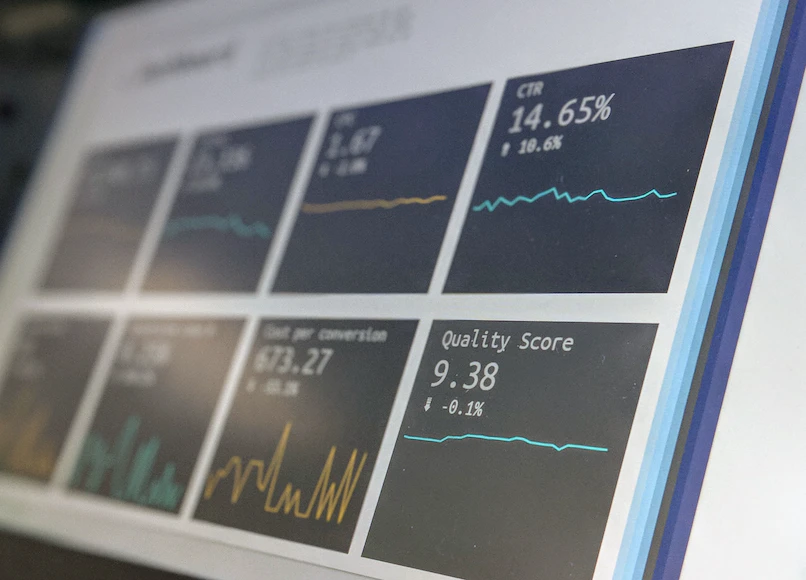It was the Bristol Tech Festival last month and what I heard and experienced seemed a little contradictory. On one hand there was a lot of talk about the looming recession, economic chaos and the cost of living crisis. On the other hand, tech businesses seemed to be firing on all four cylinders. Recruiting, seeking and gaining (well some at least) investment and scaling, typically all signs of a strong market.
I was a teenager during the 90’s recession, but recall my parents talking about super high interest rates, circa 15%, and this doesn’t feel like the 2008 financial crisis with super low interest rates circa 0.5%. I’m not an economist, but it seems there are no recent consistencies to learn from. But we need to be prepared and vigilant to changes that are afoot.
One mantra I was happy to hear (given the service BoomBoard provides) is to ‘know your numbers’. Be all over them, make checking them truly habitual. Your numbers will tell you when change is afoot. You don’t want to be late out of the gates to change.
Here are 5 areas I keep an eye on, daily.
1. Sales: The obvious one
Regardless of the nature of your business, you wouldn’t have one without sales. Be sure to monitor volume and value. Using an accounting software like Xero and/or a CRM such as Hubspot or Zoho, you’ll be able to keep a close eye on sales activity, be it pipeline status, conversions or retention rates. Watching not only snapshots, but month-on-month trends you’ll see the trajectory your business is on.
2. Cash: Who owes you money and how much, and who do you owe.
Bundled up with an overall cash position, knowing your incoming and outgoing cash flow and any changes such as debtors taking longer to pay, or an increase in bad debt, will give you a flavour of the state of your customer market. You don’t want to overextend your business either, so keeping a close eye on the incoming v outgoing is super important. Using Xero or Quickbooks for accounting, and where relevant payment platforms such as Stripe and Braintree, can give you a clear picture of cash, but also defaulted payments.
3. Interest: Activity on your website, and across your social channels
If visits to your website are declining, it could mean your SEO approach is no longer working, or it could mean interest in your services is declining. Either way, quick action is required to regain momentum needed to ensure your pipeline is alive. Plugging yourself into Google Analytics and LinkedIn (or any social channel) can help provide these early warning signs.
4. Customer support tickets: An outlier but a great indication of the health of your business.
This will be different for different types of businesses, but the principle is the same. BoomBoard is a SaaS business, so for us, keeping a close eye on incoming and resolved customer support tickets can often dictate the team’s work day ahead. You can be sure that customers will be contacting you if something goes wrong. It could be a bug in the tech, it could be subscription changes, or on the positive side, it could be a jump in sales because unbeknown to you, the press mentioned your product. Whatever the subject, a change in volume or type of queries can be an early warning and requires your attention. Hubspot or Intercom can support you here.
5. Your people: the beating heart of your business
A team delivers your business, a motivated team makes your business thrive. Typically during economic uncertainty people bed down in their jobs to secure an income, this doesn’t appear to be the case with businesses I’ve spoken to here within the Bristol tech market. Quite the opposite, businesses are recruiting heavily, which is great in many ways, but means you need to be all over company culture, career progression and individual motivation to avoid losing talent.
This is a tricky one to gauge, especially for businesses working largely remotely. But monitoring sickness rates, or productivity levels, less at an individual level and more at a business level can help give you any early warning signs.
Using BreatheHR or CharlieHR as examples of HR platforms for getting employee indicators and the likes of Wrike or Basecamp for productivity can help paint this picture. However, unlike the metrics listed above, when it comes to understanding your team, numbers can help give you an indication, but that’s it, knowing your team and the individuals within it will give you your solutions.
Businesses today have multiple platforms providing a multitude of data points on numerous subjects, knowing your numbers can be time consuming. That’s where BoomBoard comes in. BoomBoard can connect you directly to a variety of platforms and consolidate all the numbers you need to know into one place. It’s quick and surprisingly simple (according to our customers) and allows you to keep your finger on the pulse of your business so you never miss a beat. Create your first instant dashboard for free today.


